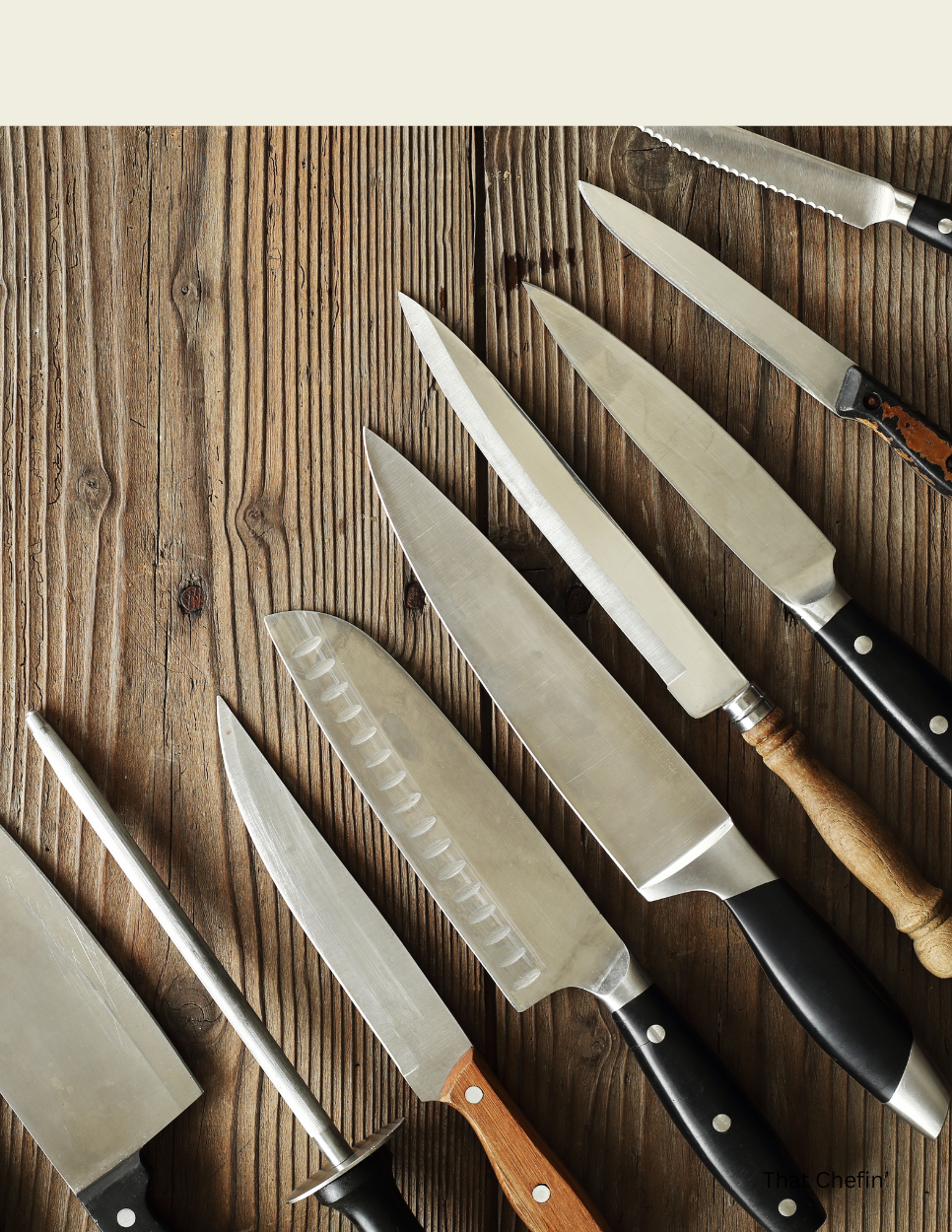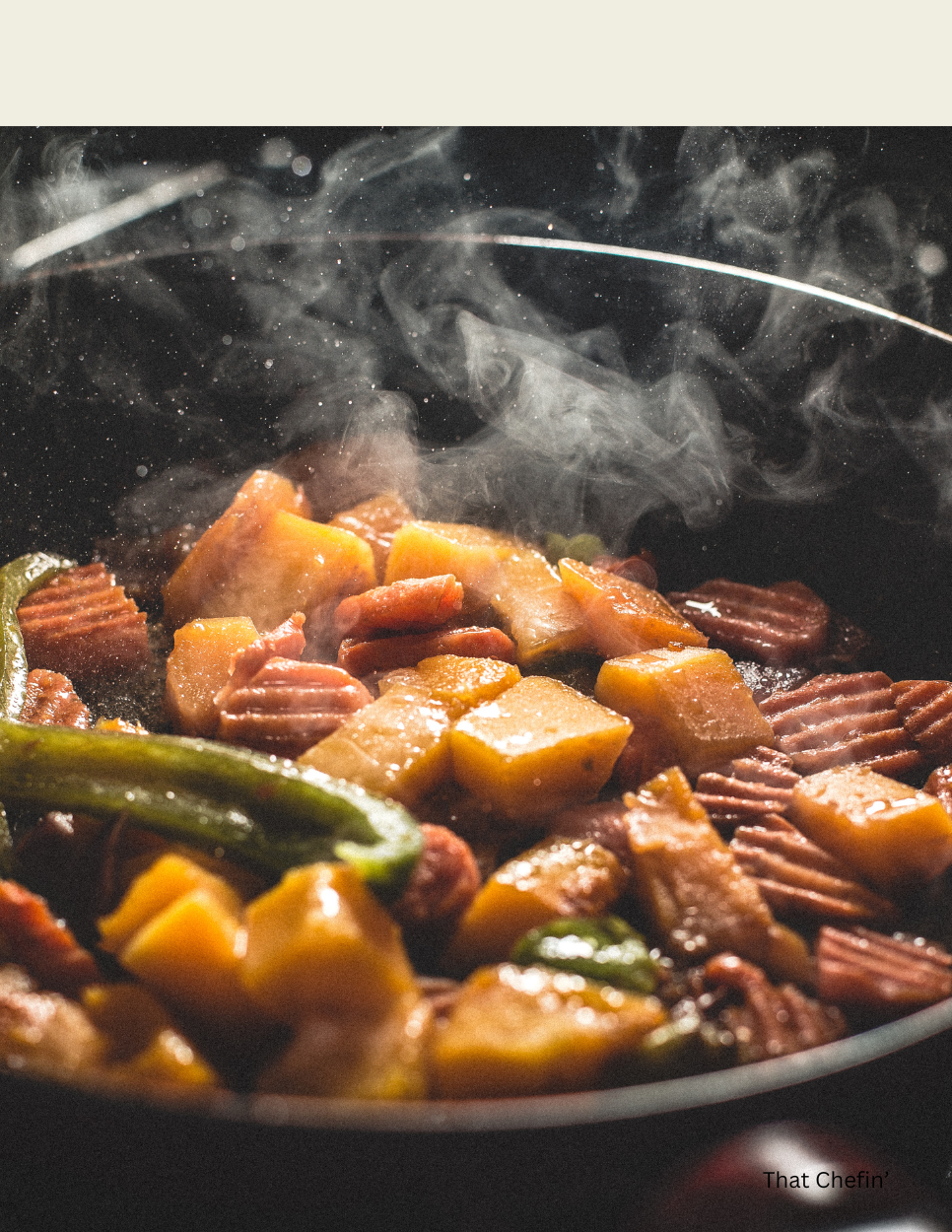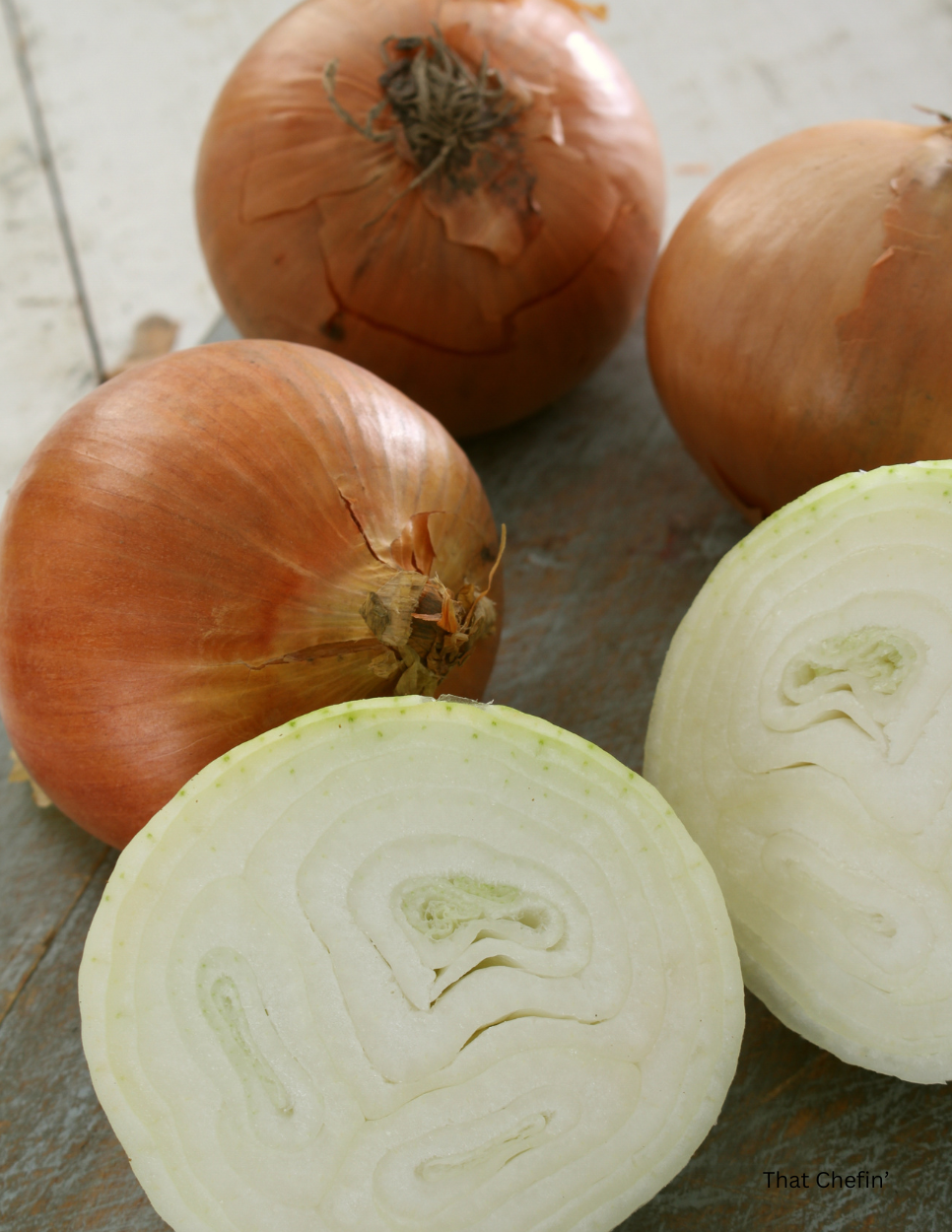This guide outlines essential knives for any kitchen, from everyday tasks to more specialized cuts.
The Core Collection:
These knives form the foundation of any well-equipped kitchen, handling the majority of cutting tasks.
- Santoku Knife: This Japanese knife, similar to a chef’s knife but with a shorter, broader, and thinner blade, is incredibly versatile. The granton edge (indentations along the blade) creates air pockets, reducing friction and preventing food from sticking. Use it for chopping, dicing, and mincing, just as you would a chef’s knife.
- Chef’s Knife: The most indispensable knife in the kitchen. Its long, broad, and weighty blade provides the leverage and heft needed for mincing, chopping, and slicing a wide range of ingredients, from vegetables and fruits to herbs. Available in 8- and 10-inch lengths; choose the size that feels most comfortable in your hand.
- Paring Knife: This small knife with a short blade is designed for precision work, such as trimming, coring, and peeling fruits and vegetables.
- Serrated Knife: The scalloped teeth of a serrated knife effortlessly slice through bread, soft foods like tomatoes and cakes, and even chocolate and nuts without crushing or tearing.
- Kitchen Shears: High-quality stainless-steel shears are invaluable for various tasks, including cutting poultry or seafood, snipping herbs, and trimming twine or parchment paper.
Specialty Knives:
As your culinary skills expand, these specialized knives can enhance your precision and efficiency for specific tasks.
- Cleaver: This heavy, robust knife is designed for chopping through bones and large cuts of meat.
- Utility Knife: A smaller, lighter version of the chef’s knife, the utility knife is a versatile tool for tasks like filleting fish or slicing meat.
- Boning Knife: The narrow, slightly curved blade of a boning knife (typically 5 or 6 inches long) allows it to maneuver between meat and bone with ease. It’s ideal for trimming fat, tendons, and cartilage, and its rounded tip is designed to work around bones.
- Slicing Knife: With its long, thin blade, the slicing knife excels at creating thin, even slices of meat, fish (especially smoked salmon), and produce.























lyzzdt
Awesome https://is.gd/tpjNyL
Very good https://lc.cx/xjXBQT
Very good https://t.ly/tndaA
Good https://t.ly/tndaA
https://shorturl.fm/dKrnX
https://shorturl.fm/LAIdu
https://shorturl.fm/zgyvI
https://shorturl.fm/T1Bkv
https://shorturl.fm/q90IG
https://t.me/s/TgGo1WIN/3
https://shorturl.fm/t3t9K
Официальный Telegram канал 1win Casinо. Казинo и ставки от 1вин. Фриспины, актуальное зеркало официального сайта 1 win. Регистрируйся в ван вин, соверши вход в один вин, получай бонус используя промокод и начните играть на реальные деньги.
https://t.me/s/Official_1win_kanal/751
https://t.me/s/Official_1win_kanal?before=3522
https://shorturl.fm/XMbDu
https://shorturl.fm/yn52p
https://shorturl.fm/afy6i
https://shorturl.fm/yKJrY
https://shorturl.fm/nU12E
https://shorturl.fm/UYUuR
https://shorturl.fm/Q5V0I
https://shorturl.fm/Cp3Sc
https://shorturl.fm/gUjpC
https://shorturl.fm/lSNVy
https://shorturl.fm/rjs4y
https://shorturl.fm/A62s3
https://shorturl.fm/cjfeC
https://shorturl.fm/IIjXT
https://shorturl.fm/8K87j
https://shorturl.fm/ANV1L
https://shorturl.fm/Il1H0
https://shorturl.fm/FZp71
https://shorturl.fm/mWTSz
https://shorturl.fm/kPIbB
https://shorturl.fm/bGH8Z
https://shorturl.fm/Eunid
https://shorturl.fm/jKd0W
https://shorturl.fm/ReNQJ